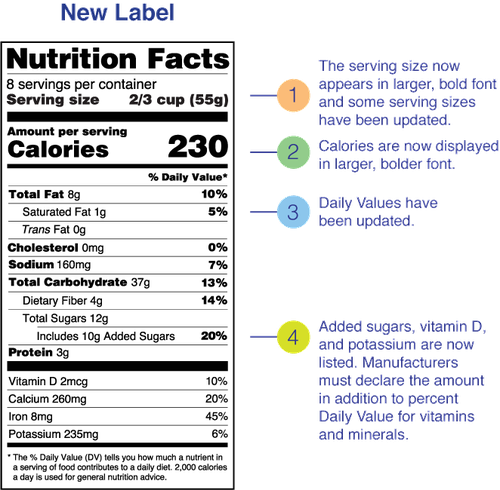
July 28, 2021
 fancycrave.com/Pexels
fancycrave.com/Pexels
The changes, the first the FDA has implemented in 20 years, are the result of updated scientific data, new nutrition research and public input.
While the U.S. Food and Drug Administration first ruled to revise the nutrition fact labels on packaged food back in 2016, seeing the updated labels in the supermarket has been a gradual process – with some of the changes only occurring within the last year.
The updates, the first to be implemented in 20 years, are the result of updated scientific data, new nutrition research and public input. The FDA said the new labels will make it easier for consumers to make informed food choices.
Food manufacturers with more than $10 million in annual sales were required to have their labels updated by January 1, 2020, but smaller companies had until January 1, 2021, according to the FDA rule. Manufacturers of honey, maple syrup and certain cranberry products had until the the beginning of this July to update their labels.
The FDA says it is still working with companies to ensure that all products have the new label design. To help educate the public on how to get the most out of the new labels, the agency has launched a new campaign called "The New Nutrition Facts Label: What's in it for You?" that includes advertising, social media, videos and downloadable educational materials.
Here are some of the biggest changes to the label:
Serving sizes: Serving sizes and servings per container more accurately reflect how much people eat and drink. They are now displayed in a larger, bolder font. Remember that the serving size is not a recommendation of how much to eat. The FDA says that while most nutrition information on the labels are based on one serving of the food, some may be based on the full content of the package.
Calories: The calorie amount is now listed in a larger, bolder font to make it easier to spot. Calorie recommendations haven't changed. The general recommendation is 2,000 calories a day, but everyone's personal nutritional needs could be a little different. Factors like height, weight and physical activity level all play a role. You can check your calorie needs at myplate.gov.
Daily Values: The percent Daily Values of nutrients, which shows how much of the nutrient in the food contributes to a daily diet, have also been updated. You may notice that the percent Daily Values may now be a little higher or lower. Any Daily Value 5% or less is considered low and any Daily Value 20% or more is considered high. The footnote at the bottom of the label now has an expanded explanation.
Updated list of Nutrients: Added sugars, vitamin D and potassium are now all required to be listed. Calories from fat along with vitamins A and C, however, are not. The amount, as well as percent Daily Value, must be displayed for vitamins and minerals.
Learn more about the updated label on the FDA's website.
